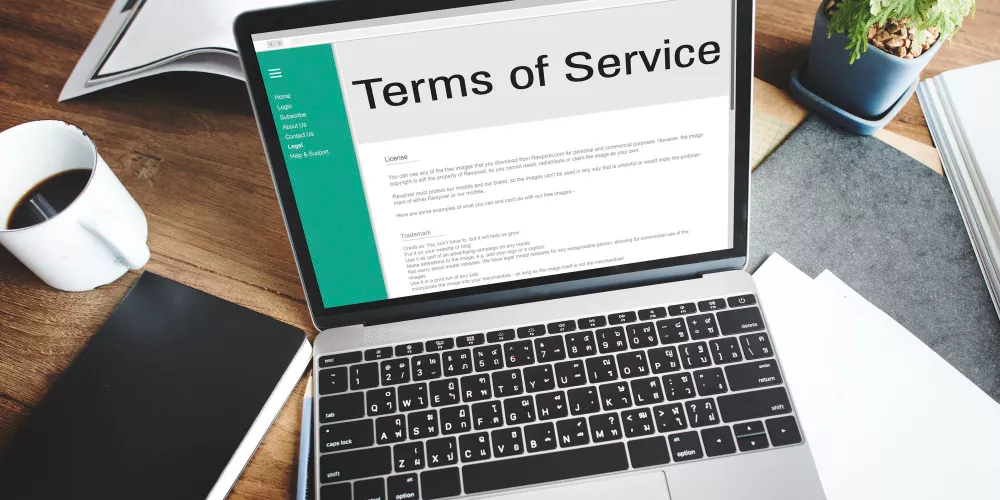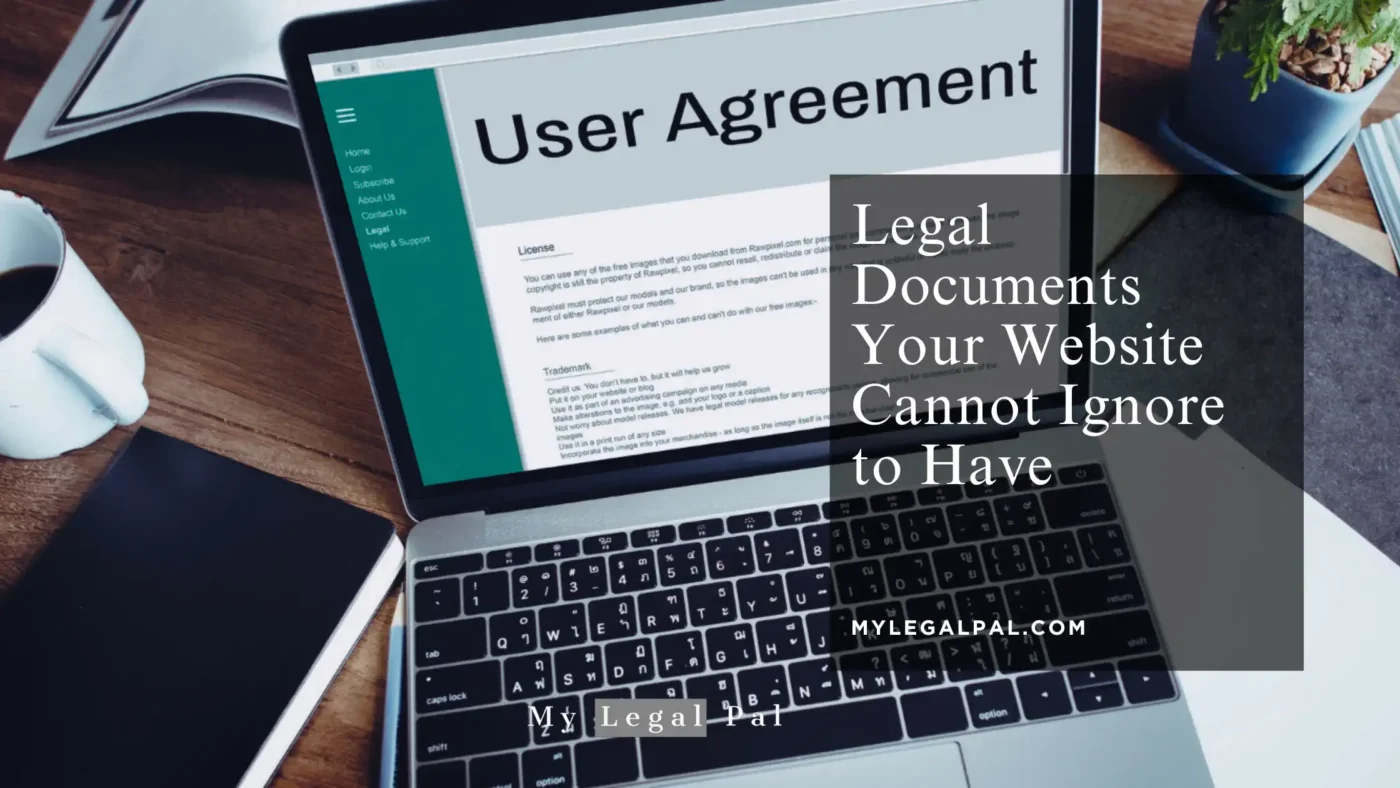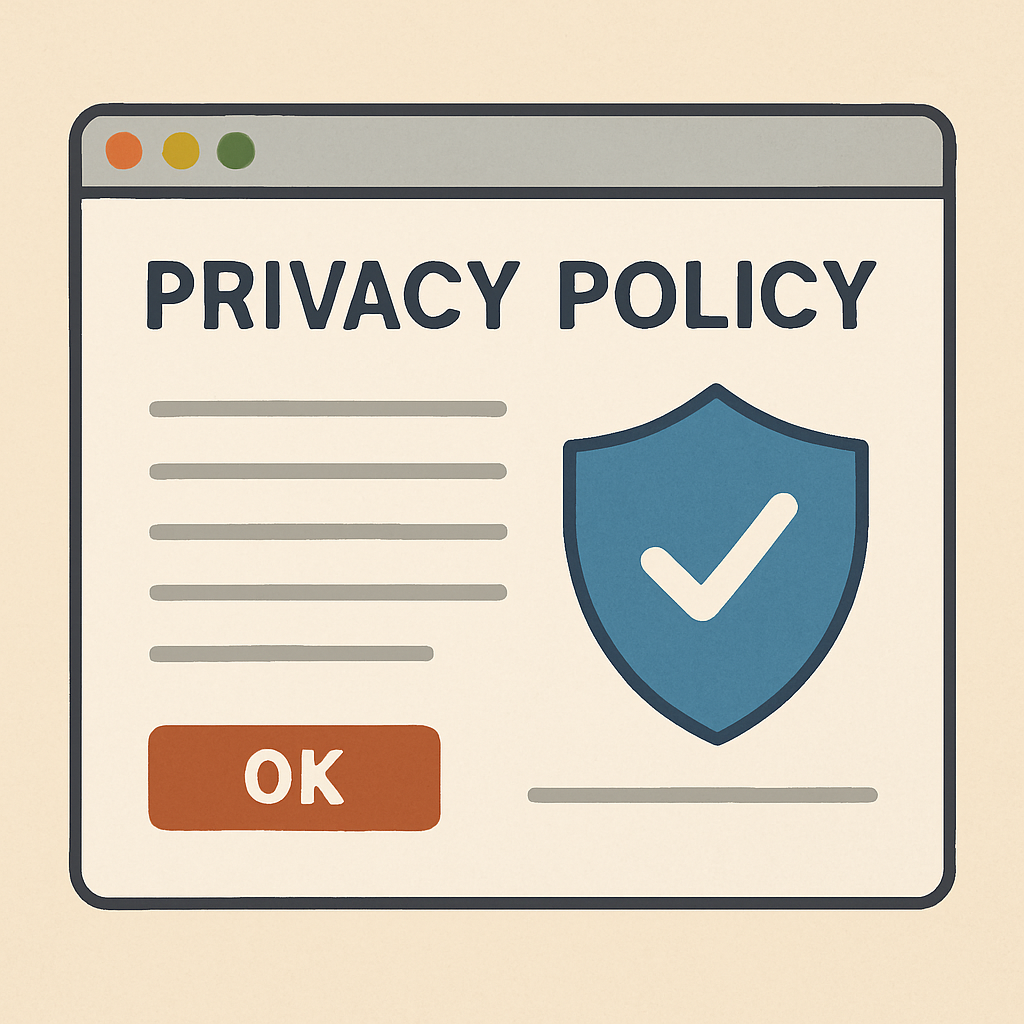In today’s digital age, having a website is crucial for any business. But it’s not just about design and content. Legal documents for website are equally important. They protect your business and your users.
Ignoring these documents can lead to serious legal issues. Compliance is not optional. It’s a necessity for every website owner.
Privacy policies, terms and conditions, and cookie policies are just the beginning. Each document serves a specific purpose. They ensure transparency and build trust with your audience.
Legal disclaimers and intellectual property notices are also vital. They safeguard your content and limit liability. E-commerce sites have additional requirements. They need specific terms for transactions and returns.
International laws like GDPR and CCPA add another layer. They require strict adherence to data protection standards. Accessibility statements ensure your site is usable by everyone. This includes people with disabilities.
Keeping these documents updated is crucial. Laws change, and so do business practices. Regular reviews help maintain compliance. Understanding these legal requirements is key. It helps you avoid pitfalls and enhances your site’s credibility.
Why Legal Documents Matter for Websites
Legal documents are essential for website compliance. They outline clear expectations for users and protect the business. Without them,\ you leave your site exposed to potential legal issues.
Websites collect personal data and share information. This requires transparency and legal documentation. Privacy policies explain how user data is handled, while terms and conditions lay down the rules for using the site.
A comprehensive list of required legal documents for websites helps businesses navigate compliance. These documents include:
- Privacy Policy
- Terms and Conditions
- Cookie Policy
- Legal Disclaimers
- Intellectual Property Notice
Privacy Policy: The Cornerstone of Website Compliance
A privacy policy is crucial for any website. It’s a legal requirement that outlines how your site collects, uses, and protects user data. Without it, you might face significant legal consequences.
Every website that gathers personal information must have a privacy policy. This includes collecting names, emails, and payment details. The policy explains how data is stored and what measures safeguard it.
An effective privacy policy builds trust. Visitors want to know their information is secure. Transparency regarding data handling ensures users feel confident interacting with your site.
Here’s what a comprehensive privacy policy should include:
- Types of data collected
- How data is used
- Data protection measures
- User rights regarding their data
- Contact information for queries
Customizing your privacy policy to fit your website’s nature is important. For example, an e-commerce site needs to detail transaction data handling. A social media platform might focus on sharing personal information.
Legal updates and technological advancements can affect privacy policies. Regularly review and update your policy to stay compliant with new regulations.
Additionally, differing laws worldwide can impact your privacy policy. Consider international users, and ensure your policy adheres to global standards, like GDPR or CCPA.
Ensure your privacy policy is easy to find on your site. It should be accessible from all pages, often linked in the footer. This visibility reinforces your commitment to transparency and security.
By maintaining a clear and updated privacy policy, you protect your business from legal trouble and foster user trust. A strong policy demonstrates your dedication to user privacy, which can set your website apart.
Terms and Conditions: Setting the Rules for Your Website
Terms and conditions (T&C) establish the rules for using your website. They protect your business and outline user responsibilities. Having T&C is not mandatory, but it’s highly recommended.
Your T&C should be tailored to your business type. It should clarify user rights, disclaimers, and liability limitations. This document serves as a contract between your website and its users.
An effective T&C document covers several key areas:
- User obligations and conduct
- Intellectual property rights
- Limitation of liability
- Payment and refund policies
- Termination of user access
- Disclaimers

It’s essential to think about potential disputes. T&C often include procedures for handling conflicts. Having such procedures in place can save you legal headaches down the line.
Make sure your T&C are clear and comprehensible. Avoid using complicated legal jargon. Users are more likely to adhere to guidelines they understand.
Regular updates to your T&C are crucial. Changes in your operations or laws might necessitate revisions. Keeping T&C updated ensures continued relevance and compliance.
Also, consider your global audience. Different legal requirements may apply in various countries. Ensure your T&C comply with international regulations if your website has a global reach.
Display your T&C prominently on your website. Users should be able to find and review them easily. This transparency helps build trust and assures users of your professionalism.
In summary, having well-drafted terms and conditions can safeguard your website. It defines the framework for interactions and helps manage user expectations.
Cookie Policy and Consent: Navigating User Tracking Laws
A cookie policy is crucial for websites using cookies. Cookies track user activity and gather valuable data. Legal compliance requires transparency about cookie usage.

Your cookie policy must explain what cookies are used. It should detail their purpose and how they’re managed. Users need to know how cookies affect their experience.
Key elements to include in your cookie policy are:
- Types of cookies used
- Purposes of data collected
- Duration of cookie storage
- Instructions on disabling cookies
User consent is vital in cookie usage. Many jurisdictions demand explicit consent before placing non-essential cookies. Providing an opt-out option respects user preferences.
Consider using a cookie consent banner. This tool informs users and gathers their consent. Ensure it is user-friendly and easy to understand.
Keep abreast of changing cookie laws. Laws like GDPR have strict guidelines on user tracking. Stayin updated on regulations ensures your website remains compliant.
Regularly review and update your cookie policy. As technology evolves, so do cookie practices. Ensuring your policy is current maintains trust and legal adherence.
Understanding your responsibilities regarding cookies is crucial. Providing clear information builds credibility It also demonstrates respect for users’ privacy rights.
Legal Disclaimers: Limiting Your Liability
Legal disclaimers are essential for protecting your business. They limit liability for the information presented on your website. Disclaimers clarify that content may not be fully accurate or applicable to every situation.

Include disclaimers for advice, especially if it involves financial, legal, or health matters. They inform users that they should seek professional help independently. Disclaimers are a shield against potential lawsuits over misunderstandings.
Common types of disclaimers used on websites include:
- General information disclaimers
- Professional advice disclaimers
- Third-party links disclaimers
- Copyright disclaimers
Craft disclaimers with clear language. Avoid jargon or complex legal terms. The goal is user understanding and transparency.
Adapt disclaimers for your industry. Each sector has unique risks that need addressing. For instance, medical sites will have different disclaimers than e-commerce sites.
Regularly review your disclaimers for relevance. Laws and market conditions change. Ensuring disclaimers reflect current realities is crucial for ongoing protection.
Placing your disclaimers in easily accessible locations is important. They’re often found in footers or dedicated “legal” pages. Accessibility reduces the chance of user disputes over unawareness.
E-commerce Terms: Protecting Your Online Store
E-commerce terms are vital for online retailers. They specify the rules for transactions on your site. Clear terms protect both buyers and sellers.

Your terms should cover several important points. Include payment methods accepted and your billing process. Specify shipping options, including costs and delivery times.
Return policies are a crucial component. Clearly explain how returns and exchanges are handled. Outline conditions under which returns are accepted.
Consider including terms about product availability. Be transparent about what happens if an item is out of stock. Set expectations to avoid customer frustration.
Here’s a quick list of essential elements for your e-commerce terms:
- Payment and billing terms
- Shipping policies and costs
- Return and refund policies
- Product availability terms
Regularly update your e-commerce terms. They must reflect any changes in your business operations. Updates should also comply with any new consumer protection laws.
Ensure your e-commerce terms are accessible and user-friendly. Place links in the footer or checkout pages. This increases transparency and trust with your customers.
Intellectual Property Notices: Safeguarding Your Content
Intellectual property notices are pivotal for protecting your website’s assets. They help guard your content, logos, and designs from misuse.
These notices inform users that your content is protected by law. They discourage unauthorized use by outlining your rights. Include details about your trademarks and copyrights.
An effective intellectual property notice should be clear and direct. State what users are permitted and not allowed to do. Providing examples can aid understanding.
Here’s a list of key components to include in your notice:
- Copyright ownership details
- Trademark information
- Usage permissions and restrictions
- Contact info for intellectual property inquiries
Ensure your intellectual property notices are visible on your website. Strategically place them where your content resides. This approach reinforces your ownership and deters infringement.
Remember, protecting your intellectual assets is ongoing. Regularly review and update your notices. Stay current with legal changes to maintain robust protection.
Accessibility Statement: Ensuring Equal Access
An accessibility statement is essential for making your website inclusive. This document outlines your commitment to providing equal access to all users, including those with disabilities.
Such a statement signals your adherence to ADA and WCAG standards. It assures visitors that your site is user-friendly and accessible. This step is crucial for both legal compliance and user trust.
Include the following in your accessibility statement:
- An overview of accessibility features
- Contact details for reporting accessibility issues
- Ongoing improvements and planned updates
Transparency is key. Clearly state your accessibility goals and how users can engage if they encounter barriers. This openness demonstrates genuine concern for all visitors.
An accessibility statement improves your site’s credibility. Show your dedication to inclusivity by regularly reviewing and updating your statement. This commitment not only fulfills legal requirements but also enhances user experience.
User-Generated Content Policy: Managing Community Contributions
A user generated content policy is critical for websites with interactive features. This document manages how users contribute comments, reviews, or content to your site.
Such a policy sets guidelines on acceptable behavior and content. It ensures that user interactions remain respectful and constructive.
Key components to include in this policy are:
- Acceptable use guidelines
- Moderation policies
- Consequences for policy violations
Clearly communicate your expectations to prevent disputes and maintain a positive environment. Providing clarity helps users understand what is permissible and what isn’t.
Implementing a user-generated content policy fosters a healthy online community. Users are more likely to engage positively when guidelines are transparent. Regularly reviewing and updating this policy is essential to adapt to evolving community standards and legal requirements.
International Compliance: GDPR, CCPA, and Other Key Laws
With websites reaching global audiences, international compliance becomes a priority. Laws like GDPR and CCPA protect user data and privacy. Adhering to these regulations is crucial for websites operating beyond their home countries.

The General Data Protection Regulation (GDPR) affects websites accessed by users in the EU. It mandates transparency and user consent for data collection.
The California Consumer Privacy Act (CCPA) applies to businesses handling Californians’ data. It emphasizes consumer rights over personal information.
To achieve international compliance, consider the following:
- Evaluate your data collection practices.
- Update privacy policies to reflect user rights.
- Implement mechanisms for users to access or delete data.
Ignoring these laws risks hefty fines and damage to reputation. Compliance signals your commitment to user privacy, fostering trust.
Review and adjust website practices to meet diverse legal requirements. This approach not only protects your business but also enhances user confidence.
Stay informed about emerging laws in different regions. Flexibility and awareness ensure ongoing compliance amidst evolving regulations.
Legal experts can provide valuable guidance in navigating complex international laws. Investing in compliance not only safeguards your business but also benefits user relations.
Website Agreements: Other Essential Legal Documents
Website agreements serve as vital tools in defining relationships and responsibilities. They often go unnoticed but play a crucial role.

These documents include:
- User Agreements: Define how users interact with your site.
- Partner Agreements: Outline terms with affiliates or collaborators.
- Service Level Agreements (SLAs): Detail expectations with service providers.
- Vendor Terms. If Sellers or Vendors are going to provide their goods/services through your site
Each of these agreements addresses specific needs and potential issues. They clarify user rights and obligations, minimizing disputes.
Developing comprehensive website agreements ensures clarity and transparency. This builds confidence among users and partners.
Always tailor agreements to reflect your business model and legal requirements. Regular reviews can help maintain their relevance and accuracy.
Common Mistakes and How to Avoid Them
Overlooking legal documents can cause significant issues. One common mistake is using generic templates without customization. These might not cover your website’s specific needs. Tailor documents to accurately represent your services and policies.
Another mistake is not updating documents frequently. Laws and business practices change often. Regularly revising your legal documents ensures they remain compliant and relevant.
Neglecting to make documents accessible is also problematic. Users need to easily locate and understand them. Ensure legal texts are clear and positioned in highly visible areas.
Key mistakes to avoid:
- Using generic templates: Opt for customized documents.
- Failing to update regularly: Revise periodically for compliance.
- Poor visibility: Make documents easy to find.
Addressing these mistakes enhances your site’s legal compliance and user trust.
Building Trust and Credibility Through Website Compliance
Website compliance is more than a legal necessity. It is pivotal in building trust with your audience. Users value transparency and security when engaging with websites.
Displaying comprehensive legal documents signals a commitment to honesty. This transparency fosters user trust and indicates professionalism. Informed users tend to stay longer and engage more.
Credibility grows when users feel protected. Secure legal agreements reassure users about data handling and service terms. This reassurance encourages return visits and positive recommendations.
To enhance trust, implement the following:
- Transparent policies: Clearly outline user rights.
- Accurate data protection: Show commitment to user privacy.
- Professional presentation: Ensure document clarity and visibility.
Frequently Asked Questions About Website Legal Documents
What are the essential legal documents for a website?
At a minimum, include a privacy policy, terms and conditions, and a cookie policy. These cover fundamental compliance needs.
Do I need a lawyer to create these documents?
While DIY templates exist, professional legal advice ensures accuracy and compliance. A lawyer familiar with your industry can tailor documents effectively.
How often should I update my legal documents?
Regular reviews are essential. Update them when laws change or your business evolves. Staying current helps avoid potential legal pitfalls.
What happens if my website lacks required documents?
Non-compliance can lead to legal actions and fines. Users may also lose trust in your site, affecting engagement and credibility.
Consider these action steps to ensure compliance:
- Review and update regularly
- Consult legal professionals
- Educate yourself on relevant laws
By addressing these common questions, you maintain a compliant and trustworthy website.
Take Action for Website Compliance
Achieving website compliance is a continuous effort. It involves understanding the legal landscape and addressing potential vulnerabilities. Taking proactive steps ensures your site stays in good standing.
Legal documents for websites aren’t just about avoiding penalties. They play a critical role in fostering user trust and building credibility. By having the required legal documents, you reassure users about your commitment to their privacy and rights.
Here’s how you can ensure compliance:
- Conduct regular audits and updates
- Consult with legal experts periodically
- Stay informed about changes in relevant laws
Implementing and maintaining these documents is crucial for any business. Start today and ensure your website meets all compliance standards with My Legal Pal.


